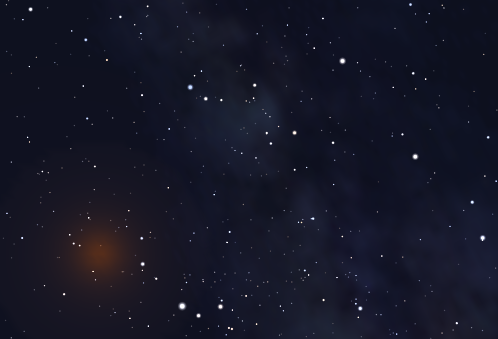The Constellation Scutum
Scutum is a small and faint equatorial constellation which appears highest in the evening sky in the months around June.
It is the fifth smallest of all the constellations, and was introduced by the Polish astronomer Johannes Hevelius in 1684 in honour of King John III Sobieski of Poland, who visited Hevelius's observatory a number of times.
Although many such politically-inspired constellations have been proposed over past centuries – for example, one Hungarian astronomer tried to introduce the constellation Harpa Georgii (George's harp) in honour of King George III of England – Scutum is the only surviving example of such celestial homage.
Scutum is depicted as a shield, whose corners are marked by its four brightest stars, though these are of only fourth and fifth magnitude.
Despite its small size and faintness, Scutum does have several deep sky objects of interest. The plane of the Milky Way passes right through the center of the shield, and moreover, it neighbors Sagittarius, which contains the center of the galaxy. Consequently, Scutum contains six open clusters brighter than tenth magnitude, as well as the bright globular cluster NGC 6712.
1684 (Hevelius)
0.3% of the sky
109.1 square degrees
Scutum contains no Caldwell objects
Hover the pointer over the name of an object to highlight its position on the starchart to the right, or click to see more information.
| Stars | Open Clusters | Globular Clusters | Galaxies |
| α-Sct (mag 3.8) | Messier 11 (mag 5.8) | NGC 6712 (mag 8.1) | |
| β-Sct (mag 4.2) | NGC 6664 (mag 7.8) | ||
| ζ-Sct (mag 4.7) | Messier 26 (mag 8.0) | ||
| γ-Sct (mag 4.7) | NGC 6649 (mag 8.9) | ||
| δ-Sct (mag 4.7) | NGC 6625 (mag 9.0) | ||
| η-Sct (mag 4.8) | NGC 6704 (mag 9.2) | ||
| ε-Sct (mag 4.9) | NGC 6683 (mag 9.4) | ||
| HIP 92814 (mag 5.1) | NGC 6631 (mag 11.7) | ||
| HIP 91105 (mag 5.1) | NGC 6639 | ||
| R Sct (mag 5.4) | NGC 6682 | ||
| HIP 90913 (mag 5.5) | NGC 6728 | ||
| HIP 90096 (mag 5.7) | IC 4768 | ||
| HIP 92136 (mag 5.7) | |||
| HIP 90991 (mag 5.7) | |||
| HIP 90804 (mag 5.7) | |||
| HIP 91532 (mag 5.8) | |||
| HIP 92488 (mag 5.8) | |||
| HIP 92391 (mag 6.0) | |||
| V432 Sct (mag 6.0) | |||
| HIP 91751 (mag 6.1) | |||
| HIP 90692 (mag 6.3) | |||
| HIP 90238 (mag 6.3) | |||
| HIP 91880 (mag 6.3) | |||
| HIP 90083 (mag 6.3) | |||
| HIP 92674 (mag 6.3) | |||
| HIP 90967 (mag 6.4) | |||
| HIP 90884 (mag 6.4) | |||
| HIP 91677 (mag 6.4) | |||
| HIP 91369 (mag 6.6) | |||
| S Sct (mag 6.8) |




